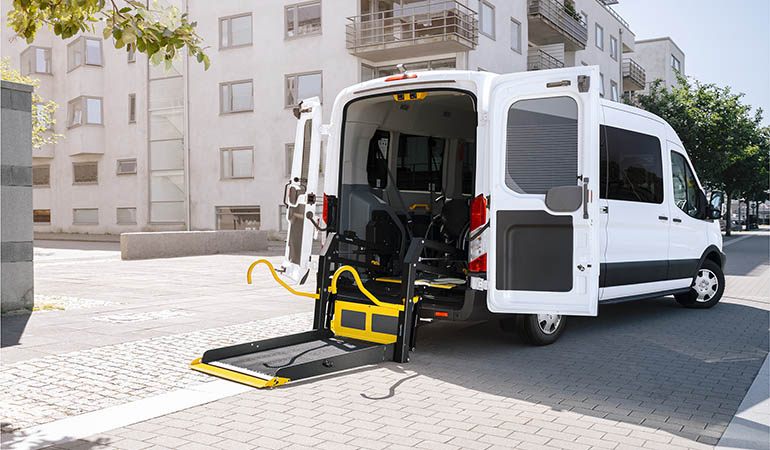
Wheelchair Lift
A wheelchair platform lift will also get you into your vehicle while letting you remain seated in your wheelchair. Roll onto the platform on the ground, push a button, and the lift will bring you to the same level as the vehicle floor. Using a wheelchair lift is super easy. Some manufacturers even have smartphone apps that act as remote controls.
Feeling safe
To make you feel more comfortable while in the air, wheelchair lifts have a few comfort and safety features. For example, the roll-stop, this barrier prevents you from accidentally rolling over the edge of the platform.
Most lifts also have handles, which gives you something stable to hold onto and reduce the feeling of vulnerability.
Finally, we have the lift's overall rigidness. If the lift design isn't rigid enough, it will sway more when lifting and cause severe discomfort for those on the platform. For the best rigidness, look to high-quality lifts.
Platform types
Different needs require wheelchair lifts have various platform types.
Solid - The most basic platform type. It does not have many features except that the design makes it the most rigid.
Folding - The folding platform stows by folding in half. One benefit is getting the stowed platform below the window for an unobstructed view. The other is to maximise platform length. For example, if needed for a long mobility device, such as a mobility scooter.
Split - The split platform stows with one half on each side, making the door opening unobstructed and free to use. For example, to load cargo.
Pros
- + Better for higher built vehicles.
- + Virtually effortless to use.
Cons
- - Larger than ramps.
- Heavy compared to a ramp.
- - More costly than a ramp.
- - All lifts require a power source.